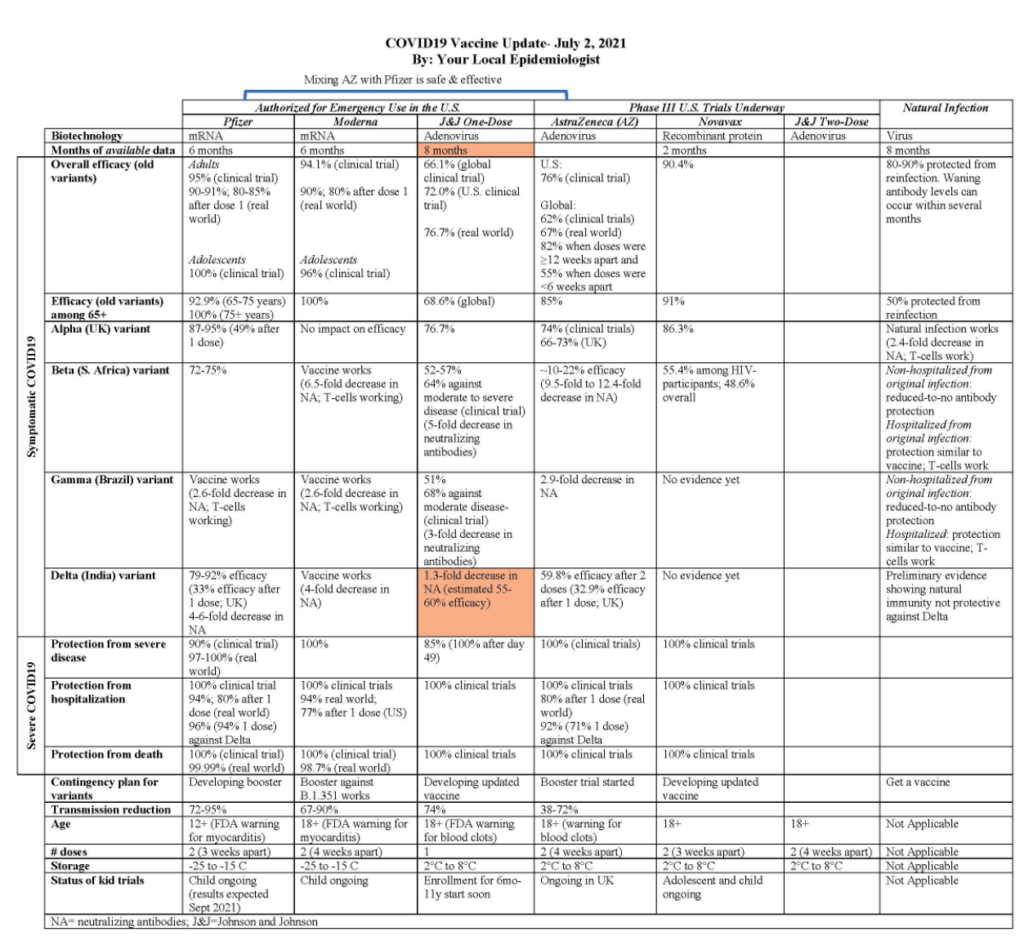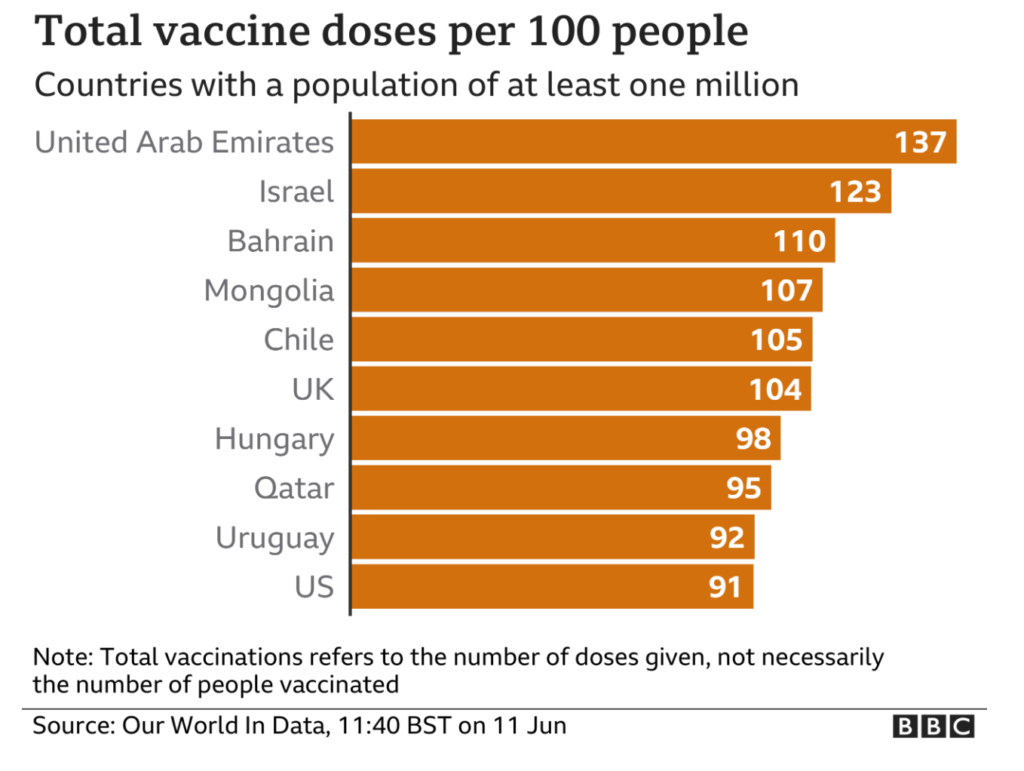Link: https://www.economist.com/europe/2021/07/10/covid-19-deaths-in-russia-are-soaring
Graphic:

Excerpt:
The number of new daily cases is currently around 25,000, somewhat fewer than in Britain, and rising. But whereas in Britain this surge has translated into an average of 18 daily deaths over the past week, in Russia it has resulted in an average of 670 deaths a day.
The contrast is all the more striking because Russia was the first country in the world to approve a working vaccine, one based on the same science as the British-Swedish AstraZeneca one and apparently just as effective. But whereas in Britain 78% of the population has received at least one jab, in Russia the proportion is only 20%. The difference is not the availability or the efficacy of the jab, but people’s trust in the government and its vaccines.
All of this could have been avoided. A year ago the government decided to lift a partial lockdown (Mr Putin called it “a holiday”), hoping to save itself money and to prop up the president’s faltering popularity after a prolonged slump in incomes. Mr Putin’s ratings did go back up—but so did the risk of infection.
Publication Date: 10 July 2021
Publication Site: The Economist



